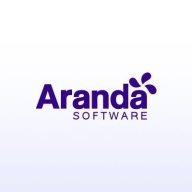

Microsoft Intune and Aranda Enterprise Mobility Management are competing Enterprise Mobility Management solutions. Microsoft Intune seems to have the upper hand due to its seamless integration with other Microsoft services, which enhances its appeal in the enterprise environment.
Features: Microsoft Intune offers seamless integration into Microsoft cloud services, strong security features, and solutions for device compliance and cloud identity. Aranda provides comprehensive multi-platform support, customizable policy management, and localized support making it versatile for diverse environments.
Ease of Deployment and Customer Service: Intune leverages Microsoft's cloud infrastructure for streamlined deployment, reducing setup complexity for organizations within Microsoft's ecosystem. Aranda provides flexibility with both on-premises and cloud deployment, emphasizing personalized local support, a significant advantage for businesses needing tailored solutions.
Pricing and ROI: Microsoft Intune's pricing complements Microsoft's value-added offerings, which can be cost-efficient for organizations already using Microsoft services. Aranda's pricing is more variable due to its flexible deployment options, leading potentially to a higher initial investment but could result in a higher ROI through customized service approaches.

With AEMM, you centralize access management, application control, data protection and security of all mobile devices used in your company, while limiting expenses and controlling mobility investments.
Microsoft Intune provides centralized management of mobile devices and applications, ensuring security, compliance, and productivity through integration with Microsoft services like Microsoft 365 and Azure Active Directory.
Organizations use Intune for managing mobile devices and applications, enhancing security and compliance across platforms. With features like single sign-on, conditional access, and zero-touch deployment via Autopilot, it facilitates efficient operations. Intune's scalability, easy enrollment, and capabilities such as remote wipe support diverse device management, offering robust data protection and efficient operation. Despite its features, improvement areas include reporting, compatibility with non-Microsoft devices, and better support for macOS and Linux devices.
What are the key features of Microsoft Intune?
What benefits should users look for in reviews?
In industries such as finance, healthcare, and education, Microsoft Intune is implemented to ensure secure and compliant device management. Companies leverage its capabilities to deploy security policies and manage both corporate-owned and BYOD environments, facilitating a unified approach to data protection and compliance.
We monitor all Enterprise Mobility Management (EMM) reviews to prevent fraudulent reviews and keep review quality high. We do not post reviews by company employees or direct competitors. We validate each review for authenticity via cross-reference with LinkedIn, and personal follow-up with the reviewer when necessary.